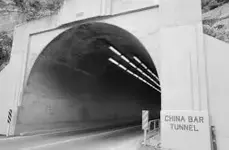isaiahburns
Tenderfoot
- #1
Thread Owner
Has anyone heard any information about this treasure?
The story goes like this: "Located just below the mouth of Salt Creek was a mining camp called China Bar, named such because it was worked by Chinese prospectors. The Indians, who had long called the area home, were unhappy with these intruders and an ongoing war was taking place between the two factions. During one vicious attack, the miners fled with their gold to a cave near China Bar but were chased down by the Indians and killed. Their gold is still said to be hidden in the cave, which has not been located. China Bar is extremely remote, located on logging roads deep in the mountains in an area called Scuzzy Creek in Fraser Canyon.”
That passage is from the page Legends of America, here: https://www.legendsofamerica.com/or-moretreasures/
I'm very interested in researching this one because it's close to where I live, but I cannot find any mention of the story before this page was published.
The story goes like this: "Located just below the mouth of Salt Creek was a mining camp called China Bar, named such because it was worked by Chinese prospectors. The Indians, who had long called the area home, were unhappy with these intruders and an ongoing war was taking place between the two factions. During one vicious attack, the miners fled with their gold to a cave near China Bar but were chased down by the Indians and killed. Their gold is still said to be hidden in the cave, which has not been located. China Bar is extremely remote, located on logging roads deep in the mountains in an area called Scuzzy Creek in Fraser Canyon.”
That passage is from the page Legends of America, here: https://www.legendsofamerica.com/or-moretreasures/
I'm very interested in researching this one because it's close to where I live, but I cannot find any mention of the story before this page was published.







